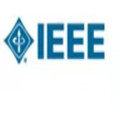Privacy preference signals are digital representations of how users want their personal data to be processed. Such signals must be adopted by both the sender (users) and intended recipients (data processors). Adoption represents a coordination problem that remains unsolved despite efforts dating back to the 1990s. Browsers implemented standards like the Platform for Privacy Preferences (P3P) and Do Not Track (DNT), but vendors profiting from personal data faced few incentives to receive and respect the expressed wishes of data subjects. In the wake of recent privacy laws, a coalition of AdTech firms published the Transparency and Consent Framework (TCF), which defines an opt-in consent signal. This paper integrates post-GDPR developments into the wider history of privacy preference signals. Our main contribution is a high-frequency longitudinal study describing how TCF signal gained dominance as of February 2021. We explore which factors correlate with adoption at the website level. Both the number of third parties on a website and the presence of Google Ads are associated with higher adoption of TCF. Further, we show that vendors acted as early adopters of TCF 2.0 and provide two case-studies describing how Consent Management Providers shifted existing customers to TCF 2.0. We sketch ways forward for a pro-privacy signal.
翻译:隐私偏好信号是用户希望如何处理其个人数据的数字表示;这种信号必须由发送者(用户)和预定接受者(数据处理者)采用; 采用是一个协调问题,尽管早在1990年代就作出了努力,但仍未解决。 浏览者实施了《隐私优惠平台》(P3P)和《不追踪》(DNT)等标准,但从个人数据中获益的供应商没有多少接受和尊重数据主体明示愿望的激励因素。根据最近的隐私法,AdTech公司联盟公布了《透明度和同意框架》(TCF),该框架界定了“选择同意”信号。本文件将GDPR后的发展纳入更广泛的隐私偏好信号历史。我们的主要贡献是高频率的纵向研究,说明截至2021年2月,TCFF信号是如何获得支配地位的。我们探讨哪些因素与网站层面的采纳情况相关。网站上的第三方数量和Google Ads的存在都与更多地采用TCFCF有关。此外,我们表明,供应商作为TCF 2.0的早期采用者,并且提供了两个案例研究,说明如何将现有的管理供应商的先期信号转换为2.0。



